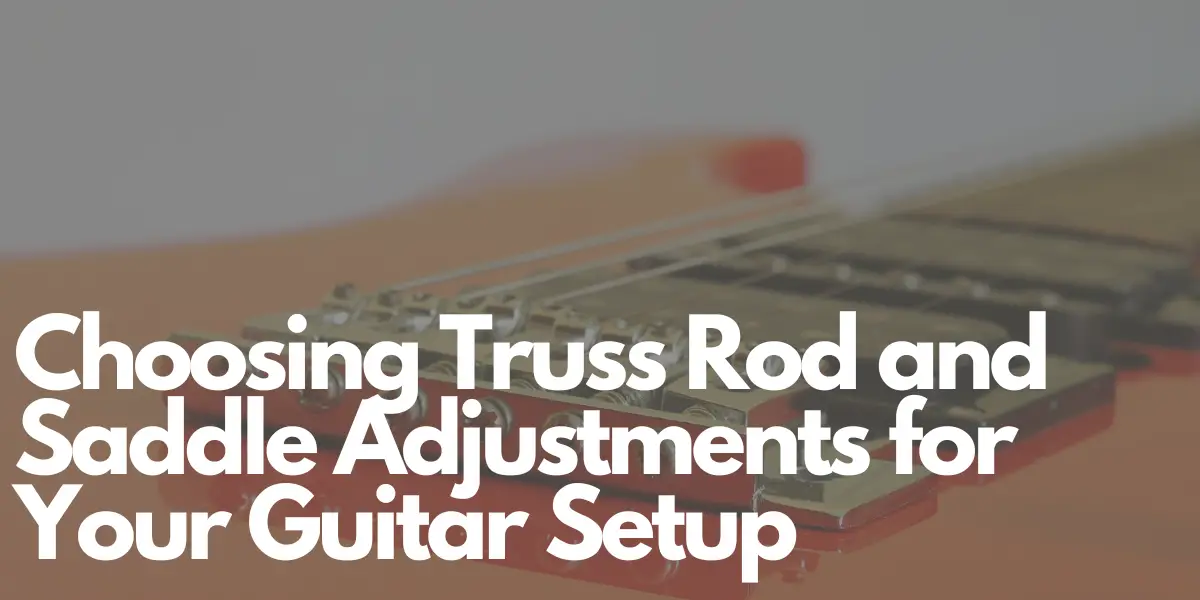Guitar setup is an essential part of maintaining your instrument’s playability and tone. Two key components come into play when optimizing your guitar’s setup: the truss rod and saddle adjustments. These adjustments can affect the neck’s curvature, string height (action), and overall playability. In this article, we’ll explore the differences between truss rod and saddle adjustments and help you determine which one to choose based on your specific needs.
Truss Rod Adjustment
The truss rod is a crucial component of your guitar, a metal rod running through the neck that allows you to control the neck’s curvature. When considering a truss rod adjustment, keep the following factors in mind:
1. Neck Relief: Truss rod adjustments primarily control the amount of neck relief (bow) or backbow. A straighter neck allows for lower action, while adding relief can prevent fret buzz by providing more clearance between the strings and the frets.
2. Neck Stability: Adjusting the truss rod can help maintain the guitar’s neck stability, ensuring it doesn’t warp or develop excessive bow due to string tension or environmental changes.
3. Fretting Accuracy: Truss rod adjustments are beneficial when addressing issues related to fretting accuracy and bowing problems that hinder the playability of the guitar.
Saddle Adjustment
Saddle adjustments, on the other hand, affect the string height above the frets, which is commonly referred to as the action. When contemplating saddle adjustments, consider the following factors:
1. String Height: Saddle adjustments enable you to control the action, which directly affects how the strings feel and play. Higher action can lead to more dynamic playing but may require more finger pressure.
2. Intonation: Adjusting the saddle is crucial for setting the intonation. Proper intonation ensures that your guitar is in tune up and down the fretboard, which is vital for accurate playing.
3. Tone and Playability: Saddle height significantly influences tone and playability. Lower action generally provides easier fretting and faster playing but can lead to fret buzz if set too low. Higher action can yield a cleaner tone but may require a more significant finger force.
Which Adjustment to Choose?
Deciding whether to adjust the truss rod or saddle depends on the specific issues you’re encountering with your guitar:
- If you’re dealing with bowing or excessive backbow in the neck, consider a truss rod adjustment to address these curvature issues.
- When facing issues related to string height, action, or intonation, focus on saddle adjustments to fine-tune your guitar’s playability and tonal characteristics.
- In some cases, both truss rod and saddle adjustments may be necessary to achieve the perfect setup. Consult a professional luthier or guitar technician for more complex issues.
Conclusion
Whether to adjust the truss rod or saddle depends on the specific problems you need to address with your guitar. Truss rod adjustments primarily influence neck relief and playability, while saddle adjustments focus on string height, action, and intonation. Carefully evaluate your guitar’s issues, and when in doubt, consult a professional who can provide expert guidance and ensure that your guitar is set up to deliver the best possible playability and sound. Keep your guitar in tip-top shape, and it will reward you with great tunes for years to come.
Author: Mike P
Hi! My name is Mike! I’ve been an apartment producer/musician for 10+ years. I’ve played in punk bands, released EDM tunes on Beatport and iTunes, and have a semi-successful stock music portfolio. Read more…


